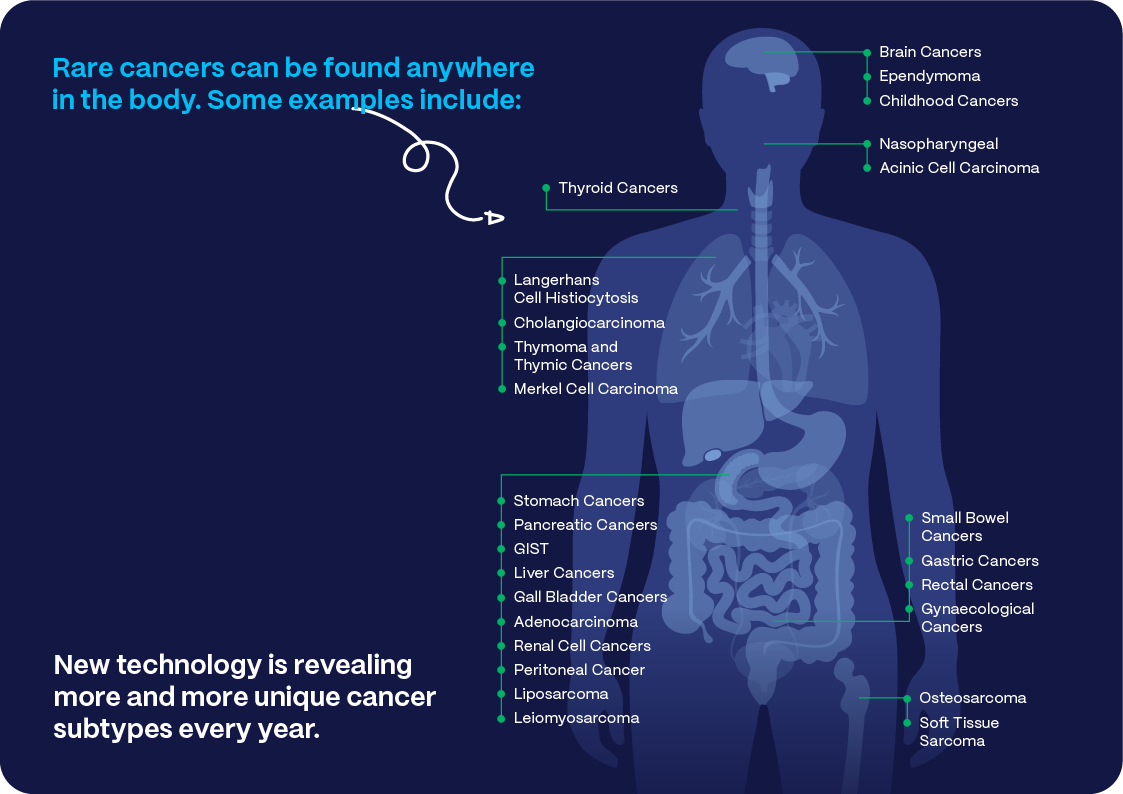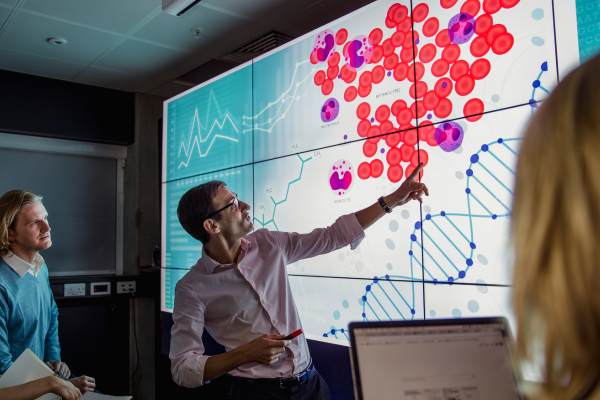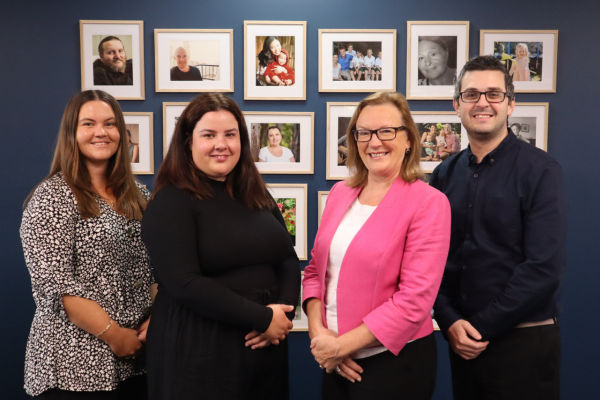The term ‘rare cancer’ actually encompasses hundreds of different cancers. Although each type affects a small number of people – which is why it’s called ‘rare’ – collectively they add up.
Approximately 40,000 Australians are diagnosed with a rare or less common cancer each year. Some 16,000 people lose their lives – that’s 43 people every day.
While about one quarter of cancer diagnoses in Australia are rare or less common, they cause a third of all cancer deaths.
Rare and less common cancers
In Australia a rare cancer has fewer than 6 diagnoses per 100 000 people in the population. A less common cancer has fewer than 12 diagnoses per 100 000.
But the numbers only tell part of the story. Many types of rare cancer are still not recognised as rare in the official statistics, which means that a rare diagnosis may actually be more common than you expect.
It is inevitable that more cancers will be considered ‘rare’ as new technology becomes integrated into our health care system. The emergence of genetic profiling technology is revealing more and more unique cancer subtypes.
A cancer is rare or less common if:
- It is very unusual and seen in very few people.
- You are much younger or older than people who are typically diagnosed with it.
- It affects a child.
- It is a common cancer in an unexpected location, such as a melanoma that started in the eye, or breast cancer in men.
Complex cancers
A cancer is considered complex if:
- It is not responding to treatment as expected.
- It is considered treatable (that is, it can be kept stable) but is not curable.
- It is a small, rare subtype of a common cancer.
- It is usually diagnosed and treated early but has been found at an advanced stage, such as stage 4 cervical cancer.
- You have been told there are no further standard treatment options.
Some examples include metastatic cervical cancer, melanoma that presents in an unusual location (like in the central nervous system), lung or bowel cancers with a specific mutation which occurs in a very small number of people.

Cancer support without limits
If you think you might have a rare, less common, or complex cancer, you are not alone. Call us on 1800 257 600 or email [email protected]. Similarly, if you have a common cancer but require additional support, please contact our team.


